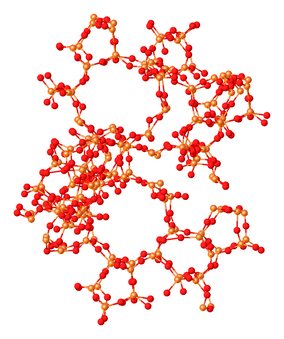Silicalite
 | |
| Identifiers | |
|---|---|
| Properties | |
| O2Si | |
| Molar mass | 60.08 g·mol−1 |
| Appearance | white solid |
| Density | 1.76 g/cm3 |
| Melting point | 1,300 °C (2,370 °F; 1,570 K) decomposition |
Except where otherwise noted, data are given for materials in their standard state (at 25 °C [77 °F], 100 kPa). | |
| Infobox references | |
Silicalite is an inorganic compound with the formula SiO2. It is one of several forms (polymorphs) of silicon dioxide. It is a white solid. It consists of tetrahedral silicon centers and two-coordinate oxides. It is prepared by hydrothermal reaction using tetrapropylammonium hydroxide followed by calcining to remove residual ammonium salts. The compound is notable in being ca. 33% porous. It is useful because the material contains (SiO)10 rings that allow sorption of hydrophobic molecules of diameter 0.6 nm.[1]
A commercially important modification of silicalite is titanium silicalite. With the formula Si1-xTixO2, it consists of silicalite with Ti doped into some Si sites. Unlike conventional polymorphs of titanium dioxide, the Ti centers in titanium silicalite have tetrahedral coordination geometry. The material is a useful catalyst for the reaction of hydrogen peroxide with propylene to give propylene oxide.[2]
References
- ↑ E. M. Flanigen, J. M. Bennett, R. W. Grose, J. P. Cohen, R. L. Patton, R. M. Kirchner, J. V. Smith (1978). "Silicalite, a New Hydrophobic Crystalline Silica Molecular Sieve". Nature. 271: 512–516. doi:10.1038/271512a0.
- ↑ Georgi N. Vayssilov (1997). "Structural and Physicochemical Features of Titanium Silicalites". 39: 209–251. doi:10.1080/01614949709353777.